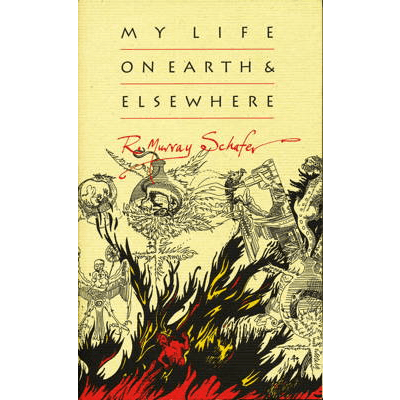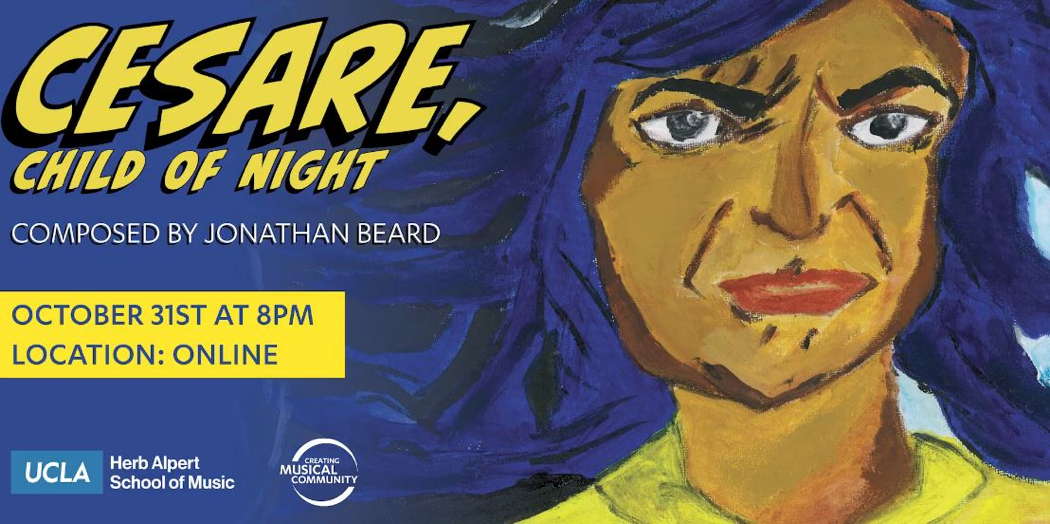ARTICLES BEING VIEWED NOW:
- Régine Crespin
- Hector Berlioz
- Ruth Railton
- Marián Varga
- Profile. A Very Positive Conductor - Paul Bodine talks to Los Angeles Opera's Music Director Designate, Domingo Hindoyan
 DISCUSSION: Defining Our Field - what is 'classical music' to us, why are we involved and what can we learn from our differences? Read John Dante Prevedini's essay, watch the panel discussion and make your own comments.
DISCUSSION: Defining Our Field - what is 'classical music' to us, why are we involved and what can we learn from our differences? Read John Dante Prevedini's essay, watch the panel discussion and make your own comments.
 SPONSORED: So Much, for So Many. R Murray Schafer's 'My Life on Earth and Elsewhere', read by A P Virag.
SPONSORED: So Much, for So Many. R Murray Schafer's 'My Life on Earth and Elsewhere', read by A P Virag.
All sponsored features >>
Unlocking Operatic Dimensions
JOHN DANTE PREVEDINI reviews the cinematic horror opera 'Cesare, Child of Night' by Jonathan Beard, Stewart Schill and Michael Cramer, and then interviews Jonathan Beard and Stewart Schill
Cesare, Child of Night is a cinematic horror opera by composer and film/TV orchestrator Jonathan Beard (Zack Snyder's Justice League and The Mandalorian), director/editor Stewart Schill (American Crime Story) and librettist Michael Cramer (Lecturer, City College of New York) based on the 1920 silent film The Cabinet of Dr Caligari. The opera incorporates and repurposes footage from the original silent film, interspersing it with newly-commissioned paintings by Sufia Sadaf depicting the same scenes in a contrasting world of vibrant contemporary color. Meanwhile, the audio of the sung roles is used to literally give voice to the silent characters on screen. The final 35-minute video production showcases a performance by an electroacoustic chamber ensemble of UCLA music faculty and received its premiere on 31 October through the UCLA Herb Alpert School of Music.

Publicity for Cesare, Child of Night
The original Caligari film, now over a century old, is considered a landmark of German Expressionist cinema that helped create the horror genre on screen. The story revolves around a traveling 'mesmerist' named Dr Caligari who visits town fairs to exhibit his attraction, an omniscient sleepwalker named Cesare whom he keeps in a wooden cabinet. During the routine, Cesare awakens from his sleep to foretell the future of any audience member brave enough to come forward. He then predicts death will come to them that very night, and he makes the prophecy come true by committing murder before fleeing with Caligari to the next town fair. The new opera Cesare revisits the Caligari story and builds upon the dramatic ambiguities and philosophical questions put forth in the original film, transforming them into a densely packed Gesamtkunstwerk of painting, poetry, music and cinema for the digital age.
The plot presented in the libretto of Cesare differs somewhat from that of the original Caligari film in a few ways. For one thing, gone is the original introduction that sets up the rest of the story as a flashback told to a stranger on a bench in a courtyard; we simply show up as spectators at Dr Caligari's exhibit and must wait until later to see the first hint of the 'true' meaning behind the story's events. We also get a different portrayal of the triangle involving protagonist Francis, his ill-fated friend Alan and their shared love interest Jane. In the original film, Alan and Francis agree on the way home from the fair that they will remain friends whomever Jane chooses for a husband, but Alan falls pray to Cesare before Jane can make that choice. In the Cesare opera, unlike in the original film, Jane is a more central character with a much greater agency in shaping events. Here, Alan and Francis actually both propose to her at the fair, and she makes her decision publicly in an aria - all before Alan meets his fate that night.
In Stewart Schill's visual universe for Cesare, the 1920 material comprises just one of many elements interwoven to bring the old story into new relief. Here, clips from the original Caligari are repurposed, reordered and layered on top of one another to vividly and complexly suggest inner states, simultaneous events, ulterior motives and ambiguities of meaning. The editing also serves to strategically create the aesthetically and structurally unstable visual landscape within which the story unfolds. Clips from the original Caligari are slowed down, colorized, reversed, symmetrically mirrored, subjected to negative image filters and interspersed with Sadaf's paintings of the same scenes. The total result seems to imply dimensions of character identity and archetype that simultaneously inhabit - and thus transcend - the many visual worlds through which we, the opera's audience, are relentlessly shifting.
This transformational dimension of the characters and their relationships is further enhanced by Jonathan Beard's music, which continuously juxtaposes opposing elements to maintain a heightened state of rhythmic, harmonic and timbral tension. The music, much like the cinematography, pits the old against the new, combining traditional forms of aria and recitative with asymmetric meters, genre-bending rhythmic energy and a wide range of contemporary harmonic and melodic possibilities. In addition, the combination of strings, percussion, piano, flutes, electronics and voices creates a sound palette that is both remarkably versatile and well balanced. The resulting score I would describe as wonderfully provocative, appropriately bizarre, emotionally articulate and highly memorable.
In conclusion, Cesare, Child of Night strikes me as a production which very successfully achieves synergy among words, music and images to retell a classic horror story in a way that unlocks new dimensions of character identity and resulting dramatic meaning. I recommend multiple viewings to savor the myriad layers of symbolic significance the opera creates, and I additionally suggest watching it alongside the original Cabinet of Dr Caligari to reveal the full degree of care and thoughtfulness that went into every aspect of the opera's conceptualization from its starting point to the finished product.
Copyright © 27 November 2021
John Dante Prevedini,
Connecticut, USA



